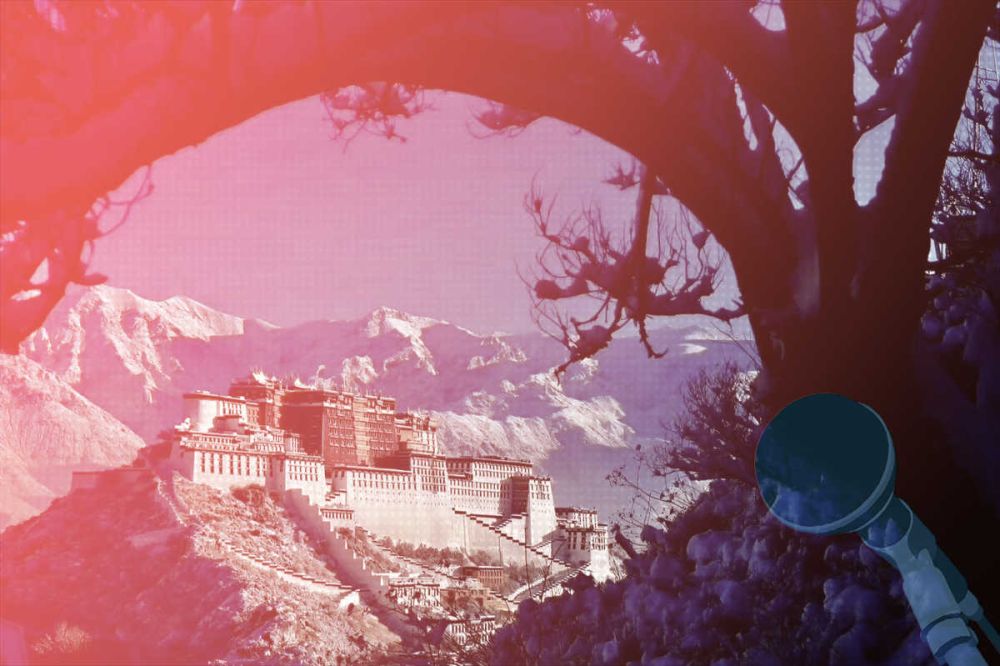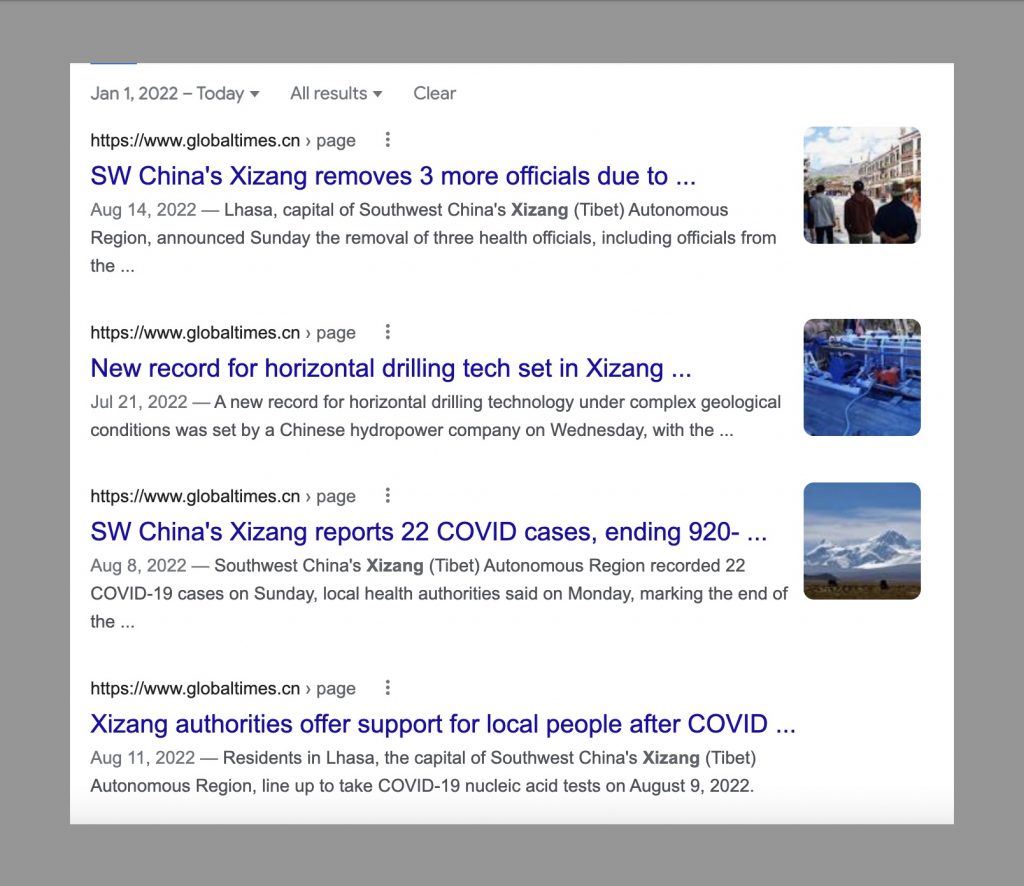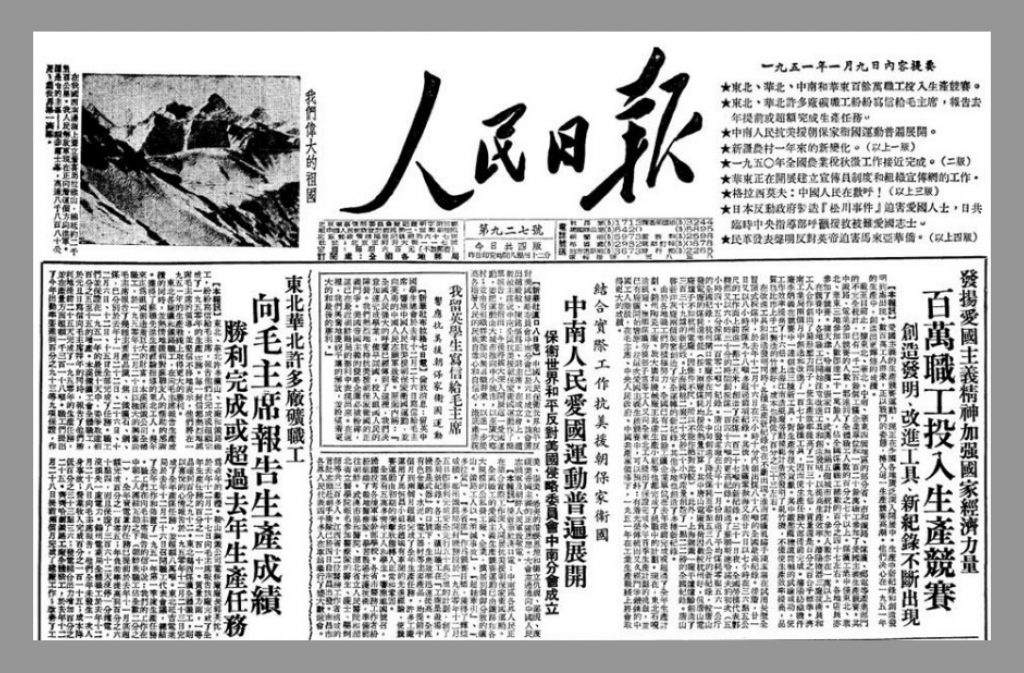
The state-run Global Times said in an English-language report this week that nearly 70 other countries had called on others to “stop interfering in China’s internal affairs on [the] Xinjiang, Hong Kong and Xizang regions.” This came amid efforts by the United States to encourage a debate on human rights in Xinjiang at an upcoming session of the UN Human Rights Council, following a report released last month by UN rights chief Michelle Bachelet.
But contained in this standard language about interference — hiding just in view — is an intriguing clue to how diplomats and state media are moving to reframe debates over sovereignty and human rights in another region, Tibet, and with the most basic of tools: the place name.
Speakers of Mandarin educated in the pinyin system, created by Zhou Youguang in the 1950s, shortly after the founding of the People’s Republic of China, will instantly recognize “Xizang” as the pinyin rendering of Tibet (西藏) — which in the local Tibetan language is called “Bod” (བོད་).
How long has “Xizang” featured in English-language coverage by the Party-state media? Only for a matter of months, it turns out.
For the Global Times, the grumbling nationalist tabloid under the umbrella of the Chinese Communist Party’s flagship People’s Daily, 2022 has been a grand coming out for “Xizang.” Before this year, “Xizang” appeared only within proper names in Global Times coverage. The sole appearance in 2021, for example, was a May report using the official name of the “Xizang Minzu University.” All three uses in 2020 referred either to the official name of the regional PLA military command, or to Shanghai’s “Xizang Middle Road.”
Since January this year, however, the Global Times has used “Xizang” in more than 200 English-language articles. For the first time, there are headline uses of the pinyin name for the region — and many of them. “New Record for Horizontal Drilling Tech Set in Xizang Hydropower Project,” read one headline back in July. “Xizang Authorities Offer Support for Local People After COVID-19 Flare-up,” read another last month.

Global Times reports are now salted with casual references to “Xizang.” A report back in January, about China’s construction of a bridge across Tibet’s Pangong Lake that has prickled border tensions with India, noted that “Xizang still lags behind other provinces of China,” and that infrastructure construction is essential to development.
In May, when China fulminated against the creation by the US State Department of a “Special Coordinator for Tibetan Issues,” the newspaper paraphrased the remarks of foreign ministry spokesperson Zhao Lijian, noting that “any Xizang-related affair is purely China’s internal affair and allows no interference by any foreign country.”
Favored by Diplomats
In the state-run media to date, the “Xizang” change appears to apply only to the Global Times. Core state media like People’s Daily Online, and China Daily, published by the State Council Information Office, have not yet followed suit.
A recent report on regional education by the China Daily notes that “Tibet has more than 920,000 students studying at various schools in the region.” The headline: “Tibet Will Send Students Out of Region Soon.” In 2021 and so far in 2022, the People’s Daily Online has still generally used “Tibet” in its English-language coverage. “Prior to its peaceful liberation, Tibet was ruled by feudal serfdom for hundreds of years,” read an article in May 2021. And a headline in March this year made the issue of sovereignty crystal clear from the outset: “People Celebrate Tibetan New Year in China’s Tibet.”
But at the Ministry of Foreign Affairs (MOFA), where “Xizang” was used just once in English-language material before 2022 — in a 2018 release by the Chinese Consulate General in Vancouver — a shift seems to be underway. It may have started on September 16, 2021, when a statement about a meeting between Foreign Minister Wang Yi and his Russian counterpart, Sergey Lavrov, noted that “Russia firmly supports China’s positions on issues related to Xinjiang, Hong Kong, Xizang and human rights.”
In 2022, the use of “Xizang” seems to have been standardized by MOFA within this list of sovereignty-sensitive territories. The latest mention came just last month, as Wang Yi met with Mongolian Foreign Minister Batmunkh Battsetseg, and an official release noted that “Mongolia reaffirms its firm commitment to the one-China principle and opposes interference in China’s internal affairs related to Taiwan, Xizang, Xinjiang and Hong Kong, among others.”
Placing Sovereignty
The retirement of “Tibet” in favor of “Xizang” by the Global Times and MOFA is likely an attempt to shift the discussion of issues relating to the region away from a place name that has come in Western languages to symbolize China’s human rights abuses, and to have toxic associations with wrangling over sovereignty. The name “Tibet” in the West has long been synonymous with the struggle for its freedom, culture, and identity, and of course with the region’s exiled spiritual leader, the Dalai Lama. Erasing “Tibet” is a rhetorical obliteration of related debates, claims and criticisms.
In 2022, the use of “Xizang” seems to have been standardized by MOFA within this list of sovereignty-sensitive territories.
Perhaps the change at the Global Times and at MOFA is also a trial balloon that will prompt similar changes at other state media down the line.
There are also parallels in China’s past re-labeling in the official discourse of other places and features on the map. For seven decades running, China has promoted the use of “Mount Qomolangma” over “Mount Everest,” spurning the latter’s association with imperialism and colonialism. The peak was named in the 19th century after the former Surveyor General of India, George Everest.
By the time the Chinese Communist Party came to power in 1949, the name “Everest” had already taken hold in the general population. And in January 1951, right in the midst of China’s annexation of Tibet, editors at the People’s Daily made a political slip when they captioned a photo of the peak — part of a series called “Our Great Mother Country” (我们伟大的祖国):
The Himalayas tower over the southwestern frontier of our country, stretching for about two 2,500 kilometers. Our People’s Liberation Army is now marching in this direction. This is its main peak, Mount Everest, which is 8,880 meters high and the world’s highest peak.
It was an oops moment for the flagship newspaper of a newly victorious CCP claiming sovereignty over the lands of the Tibetan plateau. Several weeks later — this being long before the instant controversies of Weibo — the People’s Daily ran a correction, noting that Everest was “an incorrect name” (错误的名称) and the mountain should instead be called “Zhumulangma Peak” (珠穆朗玛峰).

The article noted that while Everest had “secretly surveyed the Himalayas and discovered this peak” in the 19th century, arrogantly giving it his own name, the peak had in fact already been “discovered” as early as 1717 by a Qing emperor who had “sent many people” to survey the area. That emperor would have been Kangxi (康熙), though no mention was made in the article. In any case, a “map was later made,” it said, and the name “Zhumulangma” was placed where the proud Everest would eventually arrive 135 years later.
In an aside following this tale of competing imperial ambitions, and without the slightest sense of irony, the People’s Daily correction noted, “This name was given to the peak by the local Tibetan people.” The correction finished with a Chinese saying that today seems jarring in its frankness about what was then happening on the ground in Tibet, and the cultural, historical, and religious controversies that would reverberate through to the next century: “The name comes from the master” (名从主人).
“And so, we must correct the name of the world’s highest peak,” the article said.
For at least two decades, the Chinese government has been urging a similar transformation of the peak’s name in English. In 2002, the China Daily quoted a Tibetan scholar as saying: “It is time for the Western world to respect us Tibetans by recognizing the highest peak on Earth by its Tibetan name, Qomolangma.” The article began by reminding readers that “[the] days of empires and overt colonialism have long passed,” and that it is time to move on.
There is of course a glaring difference between the case of Mount Qomolangma, the renaming of which the Tibetan scholar urged as a matter of respect for Tibetans, and the case of Tibet/Xizang. Unlike Qomolangma, “Xizang” has no relation to the local language or culture. And for reasons that are only too obvious, no one at the Global Times or the Ministry of Foreign Affairs is urging the world to mind its own business when it comes to the land of “Bod.”
_______
For more on the history of language used to describe the Tibetan plateau, we recommend historian Elliot Sperling’s Tubote, Tibet, and the Power of Naming.




















